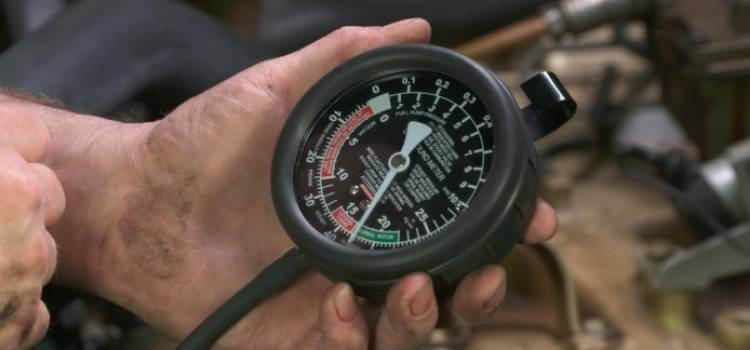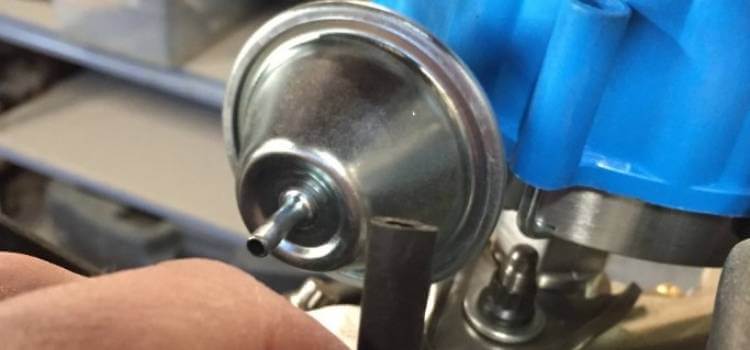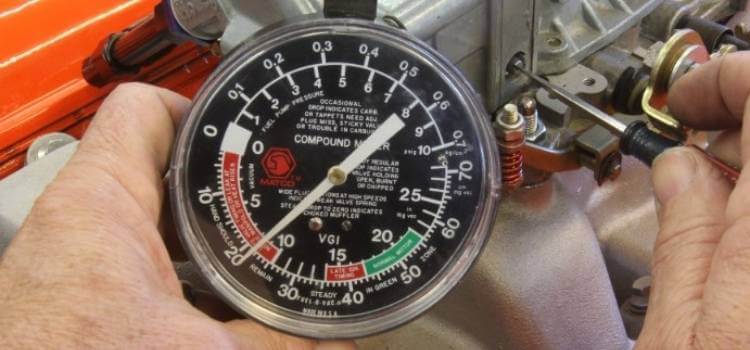As an Amazon Associate, I earn from qualifying purchases
Understanding the vacuum levels in your engine, especially at idle, is crucial for maintaining optimal performance. But what exactly should the vacuum be at idle, and why is it so important? Let’s dive into the nitty-gritty of engine vacuum, how to measure it, and what different readings mean for your car’s health.
Understanding Engine Vacuum
Definition of Engine Vacuum
Engine vacuum refers to the pressure difference created within the intake manifold when the engine runs. It’s a partial vacuum generated by the engine’s pistons moving down during the intake stroke, which pulls air and fuel into the combustion chamber.
How Engine Vacuum is Created
As the pistons descend, they create a low-pressure area in the intake manifold. This vacuum helps draw the air-fuel mixture into the cylinders, facilitating combustion. It’s a critical component in ensuring your engine runs smoothly.
The Role of Vacuum in Engine Performance
Importance of Vacuum in Engine Operation
Engine vacuum is essential for various functions, from controlling the fuel-to-air ratio to operating the power brakes. A consistent vacuum level indicates the engine performs efficiently, while fluctuations can signal potential problems.
Systems Dependent on Engine Vacuum
Several engine systems, including the brake booster, EGR valve, and various emissions control devices, rely on vacuum to function correctly. This highlights the importance of maintaining proper vacuum levels.

Normal Vacuum Range at Idle
Standard Vacuum Range for Most Engines
A regular vacuum reading at idle falls between 18 and 22 inches of mercury (inHg) for most engines. This range indicates that the engine runs efficiently with no significant performance issues.
Factors Influencing Vacuum Levels
Various factors, including engine condition, altitude, and temperature, can influence vacuum levels. Understanding these variables can help you better interpret your vacuum readings.
Measuring Engine Vacuum
Tools Required for Measuring Vacuum
You’ll need a vacuum gauge to measure engine vacuum, which is readily available at most auto parts stores. This tool helps you obtain precise readings of your engine’s vacuum levels.
Steps to Measure Vacuum at Idle
- Warm up the engine to its average operating temperature.
- Locate a vacuum port on the intake manifold.
- Connect the vacuum gauge to the port.
- Start the engine and let it idle.
- Observe the gauge reading to determine the vacuum level.
Interpreting Vacuum Readings
What Different Readings Indicate
A steady reading within the normal range (18-22 inHg) suggests that your engine is in good condition. Readings outside this range can indicate various issues, from minor leaks to more serious mechanical problems.
Normal vs. Abnormal Readings
- High Vacuum (Above 22 inHg): This may indicate restricted exhaust or an overly rich fuel mixture.
- Low Vacuum (Below 18 inHg): Often points to vacuum leaks, late ignition timing, or worn piston rings.

Common Issues Affecting Vacuum at Idle
Vacuum Leaks
Leaks in the vacuum system are a common cause of low vacuum readings. These can occur in hoses, gaskets, or the intake manifold itself.
Faulty Sensors
Malfunctioning sensors, such as the MAP sensor, can also affect vacuum readings. These sensors play a critical role in maintaining the engine’s air-fuel ratio.
Engine Timing Issues
Incorrect ignition or valve timing can lead to abnormal vacuum levels. Ensuring your engine’s timing is set correctly is crucial for maintaining proper vacuum.
Symptoms of Incorrect Vacuum Levels
Engine Performance Problems
Low vacuum levels can cause poor engine performance, including rough idling, stalling, and reduced power.
Fuel Efficiency Issues
Incorrect vacuum levels can lead to inefficient fuel combustion and lower fuel economy.
Diagnostic Trouble Codes
Modern vehicles may trigger diagnostic trouble codes (DTCs) if the vacuum levels are not within the expected range, helping you pinpoint the issue.
Diagnosing Vacuum Leaks
Methods for Detecting Leaks
To detect vacuum leaks, you can use methods such as the “spray test” with carburetor cleaner or smoke testing, which involves introducing smoke into the vacuum system to reveal leaks.
Common Areas Where Leaks Occur
Leaks often occur in vacuum hoses, intake manifold gaskets, and around the throttle body. Thoroughly inspecting these areas can help locate and fix leaks.
Repairing Vacuum Leaks
Temporary vs. Permanent Fixes
Temporary fixes, like sealant or tape, can help in a pinch but are unreliable long-term solutions. Permanent fixes involve replacing damaged hoses or gaskets.
Tools and Materials Needed
Repairing vacuum leaks typically requires tools like screwdrivers, pliers, and replacement parts like hoses or gaskets. Having these on hand can make the repair process smoother.

Impact of Altitude on Vacuum Readings
How Altitude Affects Engine Vacuum
Higher altitudes have lower atmospheric pressure, which can result in lower vacuum readings. This is a normal phenomenon and doesn’t necessarily indicate a problem with your engine.
Adjusting for Altitude Changes
If you frequently drive at different altitudes, consider consulting your vehicle’s manual or a professional to adjust your vacuum expectations accordingly.
Vacuum and Forced Induction Engines
Differences in Vacuum for Turbocharged and Supercharged Engines
Forced induction engines operate under different pressure conditions, such as those with turbochargers or superchargers. At idle, these engines may show lower vacuum levels due to the presence of the forced induction system.
How to Measure and Interpret Vacuum in These Engines
When measuring vacuum in forced induction engines, referring to the manufacturer’s specifications is essential, as these will provide the most accurate guidance for interpreting your readings.
Maintaining Optimal Vacuum Levels
Regular Maintenance Tips
Regularly inspecting and maintaining your vacuum system can prevent issues. This includes checking hoses for cracks, ensuring sensors function correctly, and keeping your engine in good tune.
Importance of Routine Checks
Routine checks can catch potential problems early, saving you from more costly repairs. Incorporate vacuum checks into your regular maintenance schedule.
Advanced Diagnostics and Tools
Using Advanced Diagnostic Tools for Vacuum Issues
Advanced diagnostic tools, such as scan tools that can read live data, can provide more detailed insights into vacuum-related problems and help pinpoint issues more accurately.
Professional vs. DIY Diagnostics
While DIY diagnostics can handle many vacuum issues, complex problems may require professional expertise. If you need clarification on your findings, feel free to consult a mechanic.
Conclusion
Maintaining proper vacuum levels at idle is essential for your engine’s health and performance. Regular checks and understanding what your vacuum readings mean can help keep your vehicle running smoothly. Whether dealing with a simple vacuum leak or a more complex issue, staying informed and proactive is critical to ensuring your engine operates at its best.
FAQs
What is the ideal vacuum reading when idle?
For most engines, the ideal vacuum reading at idle is between 18 and 22 inches of mercury (inHg).
How can I improve my engine’s vacuum when idle?
Improving engine vacuum can involve fixing leaks, ensuring proper engine timing, and maintaining a clean air filter.
What tools do I need to measure engine vacuum?
You’ll need a vacuum gauge available at most auto parts stores to measure engine vacuum.
Can a vacuum leak damage my engine?
While a vacuum leak won’t directly damage your engine, it can lead to poor performance and increased wear and tear over time.
How often should I check my engine vacuum?
Check your engine vacuum during regular maintenance, such as oil changes or tune-ups, to ensure smooth operation.
As an Amazon Associate, I earn from qualifying purchases